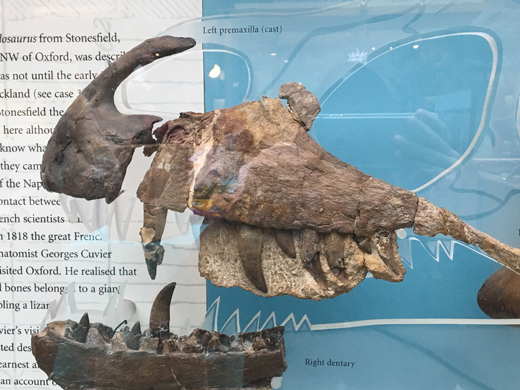Megalosaur Miscellany – A Helpful Explanation
The Confusing World of Megalosaurus
Megalosaurus will forever hold a special place in the hearts of palaeontologists as it was the first dinosaur to be officially named and described. It was the English clergyman and geologist William Buckland who was given the task of studying a piece of lower jaw (dentary) from a fossil discovered in Oxfordshire. The year was 1824 and in his paper the Reverend Buckland named this animal Megalosaurus “great lizard”.
William Buckland did not actually come up with such an evocative name as Megalosaurus, he borrowed this term from a fellow scientist James Parkinson who had used the term two years earlier. However, no matter how Megalosaurus got its name, its name is here to stay. The holotype species is M. bucklandii, named after William Buckland, a lasting legacy to one of the early pioneers of this science.
Megalosaur Miscellany
William Buckland was one of the founders of modern vertebrate palaeontology and although considered eccentric (keeping bears and jackals in his house), he continued to play an important role in the study of prehistoric animals. William Buckland is also credited as being the first person to collect dinosaur fossils from the Isle of Wight and to describe and record for scientific purposes the first dinosaur bones from the island.
Megalosaurus along with Iguanodon and the armoured dinosaur Hylaeosaurus was one of the three founding genera in the order Dinosauria. However, study of Megalosaurs has been blighted by a problem which has limited our knowledge on these meat-eaters.
Generally, fossils of carnivores are rarer than herbivores in the dinosaur fossil record. As a rule of thumb, the higher an animal is up the food chain the fewer of them there are, so there is less chance of one becoming a fossil. Limited remains of carnivores compared to herbivorous dinosaurs has been cited as evidence that these animals were warm-blooded.
In Africa for example, the ratio of lions to prey animals in a healthy diverse population is approximately 1 predator to 20 prey, in areas where Nile crocodiles are the major predator the ratio of predator to prey is nearer 5 to 20 prey. Crocodiles, being cold-blooded do not need to eat as much as their mammalian, endothermic competitors – so larger numbers of them can be sustained by equivalent populations of prey animals.
Few Fossil Remains
Only a few fragmentary remains of megalosaurs have been found in Europe. As a result, many small fossils and pieces have been attributed to the genera Megalosaurus, when in fact they may well belong to entirely different types of carnivorous dinosaur.
Skull and Jaw Material of Megalosaurus

A view of the skull and jaw material associated with the first dinosaur to be scientifically described (Megalosaurus).
Picture credit: Everything Dinosaur
The genera Megalosaurus has been described as the “dumping ground for fossil rubbish” – rather sad considering it was the first dinosaur to be officially described.
The cladogram of dinosaur theropoda (the meat-eaters) is still poorly understood and hotly debated. Much of the attention is currently focused on the Oviraptorosauria and Eumaniraptora as scientists uncover more evidence over the origin of birds, but at Everything Dinosaur we feel that the likes of Megalosaurus deserve our attention too.
It may not have been the biggest meat-eater (perhaps 9 metres long and 3 metres tall at the hips), but it was the first dinosaur described, it got the ball rolling as it were.
Many of the fossils previously cited to Megalosaurus may actually belong to other Tetanurae (stiff-tails) such as Eustreptospondylus (also found in Oxfordshire) or other genera as yet described. The relationship Megalosaurus has had with European science goes back further than 1822, one hundred and forty-six years earlier a partial femur (thigh bone) had been described and studied. Unfortunately, enormous, extinct, bipedal reptiles were beyond the educated men who examined it – instead they claimed it was from a giant man.
Megalosaurus and its links with natural history have been noted by the Natural History museum who produce a 1:40 scale model of a Megalosaurus, complete with ferocious looking tiger stripes.
To view Megalosaurus model click here: Dinosaur and Prehistoric Animal Models.

